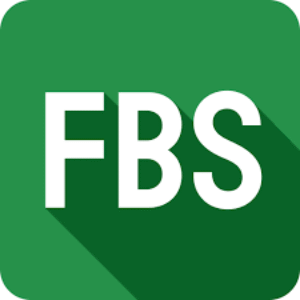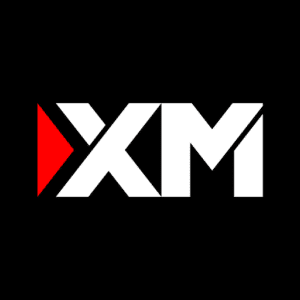
Introduction
Options trading is more popular than ever. Whether you’re a beginner learning how to trade options or an advanced trader refining complex strategies, choosing the best options trading platform is a critical decision. The right platform can significantly impact your trading experience and outcomes. As Jessica Inskip, Director of Investor Research at StockBrokers.com, observes: “The best brokers for options trading go beyond seamless order tickets and low fees; they offer tools to manage positions, analyze risk, and refine options strategies”. In other words, the best platform for options trading is not one-size-fits-all – it depends on your specific strategy, skill level, and needs.
In this guide, we’ll break down the key factors to consider when evaluating an options trading platform. We’ll also compare major brokers (like TD Ameritrade’s thinkorswim, Interactive Brokers, eToro, and Saxo Bank) to illustrate how different platforms cater to different trading styles. Armed with credible, up-to-date information, you can confidently choose the platform that best aligns with your strategy.
How to Choose the Best Options Trading Platform?
Steps to Choose the Best Options Trading Platform
| Step | Description |
|---|---|
| 1. Determine your trading strategy and needs | Understand your skill level, trading goals, and specific requirements to find a platform that aligns with your strategy. |
| 2. Compare costs and fees | Evaluate the fee structures of different platforms, as high fees can eat into your profits. Look for brokers with competitive rates. |
| 3. Assess platform features and tools | Look for advanced tools like option chains, strategy builders, P&L calculators, and risk analysis to help manage your trades effectively. |
| 4. Evaluate user interface and experience | Choose a platform with an intuitive interface that matches your experience level, whether you’re a beginner or an advanced trader. |
| 5. Check educational resources | Ensure the platform offers tutorials, webinars, and other learning materials to help you build your trading skills. |
| 6. Ensure global accessibility and regulation | Verify that the platform is available and licensed in your region, and that it provides access to the markets you want to trade. |
Comparison of Top Options Trading Platforms
| Platform | Best For | Fees per Contract | Key Features | User Interface | Educational Resources | Global Access |
|---|---|---|---|---|---|---|
| Charles Schwab (thinkorswim) | Beginners & Advanced Traders | $0.65 | Option chains, strategy builders, P&L calculators, risk analysis | Intuitive, full-service | Extensive tutorials, webinars, paper trading | U.S.-focused, limited international |
| Interactive Brokers | Advanced Traders | ~$0.65 | Customizable tools, Trader Workstation, global market access | Complex, steep learning curve | Moderate, focuses on advanced users | Access to many international markets |
| eToro | Beginners & Casual Traders | $0 (select regions) | Simple app, social trading, zero commission options | Mobile-friendly, beginner-oriented | Basic, social feed for learning | Limited regions, U.S. included |
| Saxo Bank | Experienced International Traders | Higher fees | Professional-grade, 20+ options markets | Advanced, professional | Moderate, professional-focused | 20+ markets, not available in U.S. |
Key Factors in an Options Trading Platform
When searching for the best trading platform for options, keep the following factors in mind:
| Factor | Key Insights | Examples |
|---|---|---|
| Costs and Fees | Fees range from $0.50–$0.65 per contract; fee structures vary. High fees can reduce profits significantly. Some brokers cap commission per trade. | Tastytrade caps at $10/trade. Cheapest broker = $5 for 10 contracts; priciest = $35. |
| Platform Features and Tools | A good platform offers more than just trade execution – look for option chains with Greeks, strategy builders, risk tools, and P&L calculators. | Top-tier tools available on platforms like tastytrade and thinkorswim. |
| User Interface and Experience | Beginners need simple, intuitive platforms. Advanced traders might prefer complex platforms for more control and features. | eToro (beginner-friendly, social), Interactive Brokers TWS (feature-rich, complex). |
| Educational Resources | Strong education helps new traders learn faster. Look for tutorials, webinars, simulators, and paper trading features. | Schwab’s thinkorswim and tastytrade offer extensive options education. |
| Global Accessibility and Regulation | Platform must be licensed in your region and offer access to desired markets. Some are U.S.-only, others support global traders. | Saxo Bank (20+ global exchanges, not for U.S. residents); Interactive Brokers (broad access). |
- Costs and Fees: High fees can eat into your profits. Many brokers charge around $0.50–$0.65 per contract for options, but fee structures vary. Some, like tastytrade, cap commissions per trade (e.g. $10 max). One analysis found a 10-contract trade could cost $5 at the cheapest broker versus $35 at the priciest – a difference that adds up over time.
- Platform Features and Tools: Beyond executing trades, the platform should help you analyze and manage positions. Look for detailed option chains (with Greeks), strategy builders, profit-and-loss calculators, and risk analysis tools. The top platforms provide these sophisticated features along with reliable execution.
- User Interface and Experience: An intuitive, stable interface saves time and prevents mistakes, particularly with complex orders. Beginners may prefer a clean, simple platform that shortens the learning curve, while veteran traders might trade a bit of simplicity for more powerful functionality. For instance, Interactive Brokers’ TWS offers immense capability but isn’t very beginner-friendly, whereas a platform like eToro’s app prioritizes simplicity and social features.
- Educational Resources: Strong educational support is a hallmark of a good broker, especially for new traders. The best brokers offer tutorials, webinars, and even simulators or paper trading. For example, Schwab’s thinkorswim and tastytrade provide extensive options education that helps users build skill and confidence. If you’re a beginner, look for a platform with a rich library of learning materials and practice tools.
- Global Accessibility and Regulation: Ensure the platform is available and licensed in your region, and that it supports the markets you want to trade. Some top platforms are U.S.-only, while others like Interactive Brokers and Saxo Bank have a broad international presence (Saxo offers access to 20+ options exchanges worldwide). Note that Saxo isn’t available to U.S. residents, and some U.S. brokers won’t accept clients from abroad. Always choose a well-regulated broker that offers the market access you need.
Comparing Top Options Trading Platforms
To illustrate how these factors play out, here’s a look at some major options brokers and who they’re best suited for:
- Charles Schwab (thinkorswim): Schwab’s acquisition of TD Ameritrade gives its clients access to the powerful thinkorswim platform and extensive research/education offerings. Fees are typical ($0.65 per contract). Best for: traders who want a full-service platform suitable for both beginners and advanced users.
- Interactive Brokers: Interactive Brokers offers a sophisticated Trader Workstation with an “astounding array of customizable tools” but has a steep learning curve. It features low costs (~$0.65 per options contract) and access to many international markets. Best for: advanced traders and those who need global market access at minimal cost.
- eToro: Known for social investing, eToro recently launched an options trading app with a simple, mobile-friendly interface. It charges zero commissions or contract fees on options trades, and includes a social feed. However, this service is available only in select regions (such as the U.S.). Best for: beginner and casual traders who value ease of use and social features (if options trading is offered in their country).
- Saxo Bank: A European broker offering a professional-grade platform with access to 20+ options markets worldwide, but its fees are relatively high and it isn’t available to U.S. investors. Best for: experienced international traders who need broad market access and advanced tools, and who are willing to pay higher fees.
Conclusion
In summary, the best broker for option trading is one that aligns with your strategy and comfort level. If possible, test-drive the platform with a demo or paper trading account before committing real funds. A trustworthy broker offers useful tools, fair pricing, and reliable support. By considering the factors above, you can find a platform that gives you the confidence to execute your options strategies effectively.
FAQ
Which options trading platform is best for beginners?
Beginners should choose an easy-to-use platform with good educational support. Charles Schwab (TD Ameritrade’s thinkorswim) is excellent for its extensive tutorials and practice mode. Mobile-first brokers like Webull or Robinhood are also popular for their simple interfaces (though they offer less in-depth education). Pick a broker that provides clear guidance and a way to practice trading as you learn.
What options trading platforms are available internationally?
Interactive Brokers is a top choice globally, as it operates in many countries and offers access to numerous markets. Saxo Bank is popular in Europe and Asia, providing a wide range of options exchanges, though it isn’t open to U.S. residents. Always ensure your broker is licensed in your country and covers the markets you want to trade.
What is Option Alpha in options trading?
Option Alpha is a third-party platform focused on automated options trading and education. It isn’t a brokerage itself; instead, it lets you create trading “bots” that connect to your brokerage (for example, via Tradier) to execute trades, often with no commissions. Option Alpha also provides a wealth of learning resources on options strategies. It’s best suited for experienced traders who want to automate complex strategies.
Can you trade options on eToro?
eToro has introduced options trading via a dedicated app (with zero commissions), but this feature is not available in all countries. Currently it’s offered to U.S. users and a few other regions. If you’re in a location where eToro’s options service isn’t available, you will need to use a different broker to trade options.











